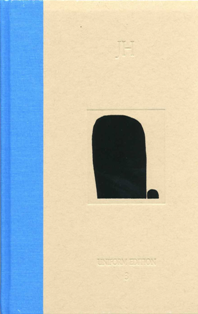Last September chief film critic for The New York Times A. O. Scott wrote a long and wide-ranging review of American culture as reflected in television and cinema. He called his piece “The Death of Adulthood in American Culture.” In his review Scott argues that the decline of patriarchy and the adult male in American society as depicted in “The Sopranos,” “Breaking Bad,” and “Mad Men,” has created a vacuum largely now filled by infantile escapism, i.e. the refusal of American citizens to grow up and enter the world of relationships and responsibility.
This refusal is evident in such male-driven cinematic fare as the innumerable comic-book movies which endlessly play on our movie screens or the equally ubiquitous bro-mance comedies like “The Hangover,” “The Forty-Year-Old Virgin,” and “Knocked Up.” But the boys are not alone; female-centric TV shows such as “Girls” and “Broad City,” are rebellious in their own right. Scott states that these latter shows are characterized by “a freedom to be idiotic, selfish and immature as well as sexually adventurous and emotionally reckless.”
Young Adult fiction receives a similarly generous dose of Scott’s ire. Toward the beginning of his essay he writes:
“I will admit to feeling a twinge of disapproval when I see one of my peers clutching a volume of ‘Harry Potter’ or ‘The Hunger Games.’ I’m not necessarily proud of this reaction. As cultural critique, it belongs in the same category as the sneer I can’t suppress when I see guys my age (pushing 50) riding skateboards or wearing shorts and flip-flops, or the reflexive arching of my eyebrows when I notice a woman at the office has plastic butterfly barrettes in her hair.”
Finally, toward the end of his critique he adds:
“Grown people feel no compulsion to put away childish things: We can live with our parents, go to summer camp, play dodge ball, collect dolls and action figures and watch cartoons to our hearts’ content.” “It is now possible to conceive of adulthood as the state of being forever young.”
Perhaps unknown to Scott is the fact that this concept of adulthood as the state of being forever young is not new to the rank and file of analytical psychology. As early as the winter of 1959-1960 Marie-Louise von Franz gave twelve lectures which were published together a decade later as her seminal text The Problem of the Puer Aeternus, the problem of the eternal youth. At the outset of her book von Franz writes, “In general, the man who is identified with the archetype of the puer aeternus remains too long in adolescent psychology; that is, all those characteristics that are normal in a youth of seventeen or eighteen are continued into later life […]” (7). Characteristics like riding skateboards and wearing plastic butterfly barrettes. A. O. Scott would do his unsuspecting co-workers a favor, then, were he to secretly replace their dog-eared volumes of Harry Potter and The Hunger Games with von Franz’s attractively packaged and undeniably incisive Puer Aeternus.
Or would he? In fact the present post argues that such books as Harry Potter and The Hunger Games—as well as their cinematic adaptations—provide the very solution to the problem under discussion, i.e., the youth who remains forever young and immature. Indeed, careful consideration of the narrative and imagery of these works yields a potential cure for “The Hangover” and “The 40-year-old Virgin,” a possible path to womanhood for the “Girls” of “Broad City.”
 The distinction made here between problem and cure with reference to specific films and shows owes a debt both to the 6th century Roman philosopher Boethius and the archetypal psychologist James Hillman. In The Consolation of Philosophy, Boethius writes “But it is rather time,” saith she, “to apply remedies, than to make complaintes.” This statement is the first of three epigraphs to Hillman’s essay “Senex and Puer: An Aspect of the Historical and Psychological Present.” Originally presented and published in 1967 and now found in Volume 3 of his Uniform Edition (pictured at top), Hillman’s essay marks his first of multiple important writings on the subject of the puer. Scott and von Franz may lodge the complaint about the youth who remains forever young, but Hillman provides the remedy.
The distinction made here between problem and cure with reference to specific films and shows owes a debt both to the 6th century Roman philosopher Boethius and the archetypal psychologist James Hillman. In The Consolation of Philosophy, Boethius writes “But it is rather time,” saith she, “to apply remedies, than to make complaintes.” This statement is the first of three epigraphs to Hillman’s essay “Senex and Puer: An Aspect of the Historical and Psychological Present.” Originally presented and published in 1967 and now found in Volume 3 of his Uniform Edition (pictured at top), Hillman’s essay marks his first of multiple important writings on the subject of the puer. Scott and von Franz may lodge the complaint about the youth who remains forever young, but Hillman provides the remedy.
Essential to the application of this remedy is Hillman’s distinction between the archetypal background and the neurotic foreground of the puer. The archetypal background of the puer shines through such recent film series as The Hunger Games, Divergent, and The Maze Runner, all of which have captured the public imagination precisely because they communicate timely and transcendent, or archetypal, “messages from the spirit.” Hillman also refers to these messages as “calls to the spirit” (50-51).
These messages or calls, however, are obscured by and in the puerile films and shows criticized by Scott. Such stories of arrested development concern parental complexes of the personal unconscious rather than healing messages from the collective unconscious or spirit. See Adam Sandler. The tics, twitches, and tomfoolery of his many characters, their temper tantrums, reveal little more than their place front and center in the neurotic foreground of the puer. Such characters may be funny in a sophomoric way but rarely if ever do they graduate to a higher, or deeper, meaning and significance.
Seeing through the foreground of the puer to its healing archetypal background begins with the recognition that the puer is one half of what originally comprised a single bipolar archetype, the puer senex or puer senilis. The youth-age polarity (35). Hillman notes that these two poles or faces of the same puer senex archetype are evident in Jewish mysticism via The Holy Old Man as Attik and in Roman mythology via Saturn, both of whom sometimes conceal themselves as if with a hood. Or as we might say today, “The Holy Old Man in a hoodie.” These and other examples given by Hillman demonstrate a degree of original identity shared by the two poles, an identity he refers to as “a union of sames” (60-61).
Today these two poles are split. The ego or willful mind has separated the puer senex archetype into the puer and senex. The union of sames has become a conflict of extremes (61). In The Hunger Games (shown above), Divergent, and The Maze Runner—as in our own world—this conflict of extremes manifests as extreme conflict, one side pitted against the other. Not utopia but dystopia, i.e., the dystopia of Panem, post-apocalyptic Chicago, and the wasted world outside the Maze…
———————–
Note: The above represents the first part of a twenty minute presentation I gave July 10th in Connecticut. In Los Angeles on July 24th, I expanded this material into a two hour lecture.


